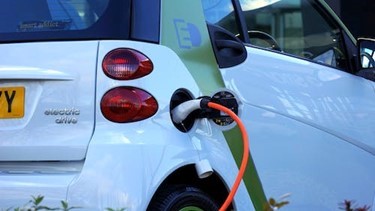 If you’re a motorist and you’re feeling a little bit uncomfortable about the impact that your driving habits are having on the natural world, then you’re not alone. Environmental concerns are of concern to millions of us – and, since transport accounts for a sizeable chunk of overall carbon emissions, it’s an activity that’s due some scrutiny.
If you’re a motorist and you’re feeling a little bit uncomfortable about the impact that your driving habits are having on the natural world, then you’re not alone. Environmental concerns are of concern to millions of us – and, since transport accounts for a sizeable chunk of overall carbon emissions, it’s an activity that’s due some scrutiny.
We might intervene here in a number of ways. We might invest in new technologies, or limit our driving altogether. We might also think about driving in such a way that minimises our eco emissions, and thus the impact that we have on the natural world.
Fuel efficiency tips
Eco-friendly driving is, for the most part, about limiting the amount of fuel we expend per mile travelled. This can be done in a number of ways. We might make sure that the vehicle is in good condition, so that it gets the best mileage possible. This might mean regularly inflating our tyres, and ensuring that they’re in good condition. It might mean booking more frequent services. Or, it might mean adapting our techniques.
Reducing our carbon footprint
If your engine is on when the car is not in motion, then you’ll be burning petrol unnecessarily. Modern cars will switch off automatically when in traffic – but if yours does not, you can always turn the ignition manually.
You might also limit your miles by joining a carpooling scheme, or by using public transport, or walking. If everyone in the world took up these measures, then much of the carbon emissions problem would vanish.
Eco-Friendly driving techniques
If you absolutely must drive, then you can limit your emissions by limiting unnecessary acceleration and braking. Keep your speed as constant as possible, and look ahead in anticipation of stopping at traffic lights and junctions. Cruise control on motorways can be extremely effective in keeping the strain on the engine steady. If you’re just learning to drive, then it’s easy to build these habits. Get some learner driver insurance and spend some extra time practicing, while monitoring your speed and braking.
Choosing an eco-friendly vehicle
Hybrid and electric cars are an increasingly popular choice. They produce fewer emissions at the point of use, which makes them a great match for low-emission zones in city centres. They’re also much cheaper to run, particularly if you’re putting in a lot of miles.
We should bear in mind, however, that the manufacture of a lithium-ion battery imposes an environmental cost that won’t be balanced out until you’ve driven several thousand miles. If you’re limiting your motoring altogether, then the environmental benefits of making the switch might not be so considerable.
Maintenance practices for eco-friendly driving:
If you own a car, then you have a duty to keep it in good shape. But this can cause problems if you’re not maintaining the vehicle in an eco-friendly way. Make sure that you’re disposing of your used motor oil properly, and that you’re cleaning the car using eco-friendly products that aren’t going to clog up the drains.










